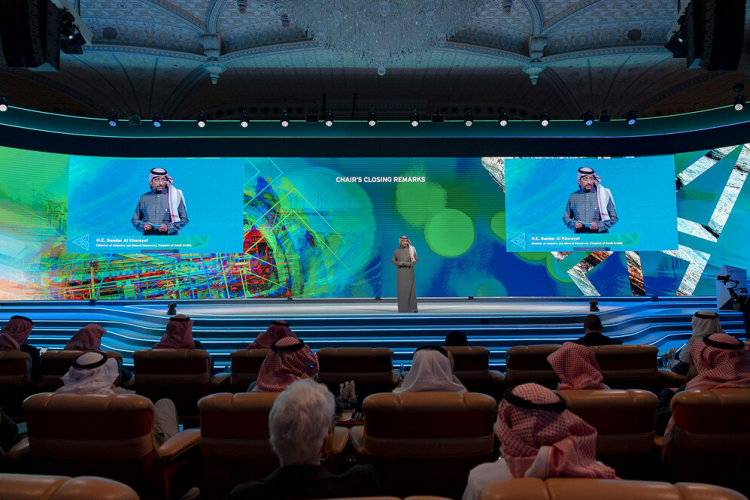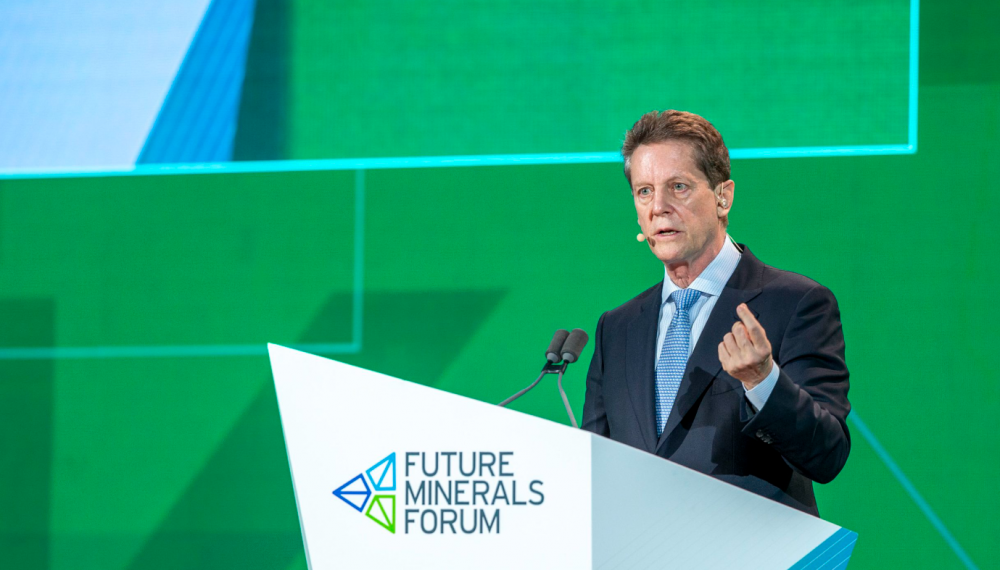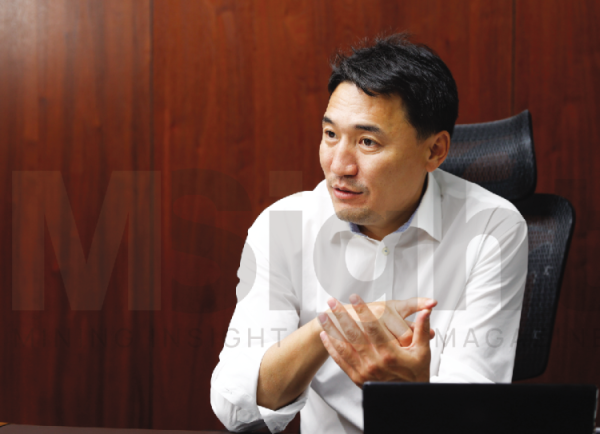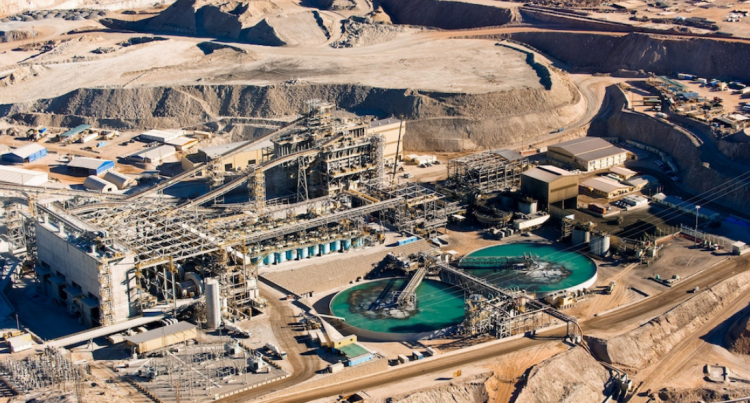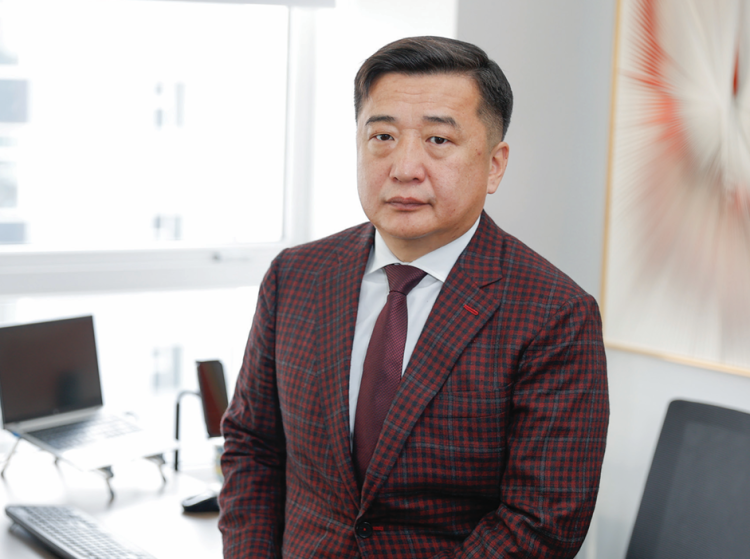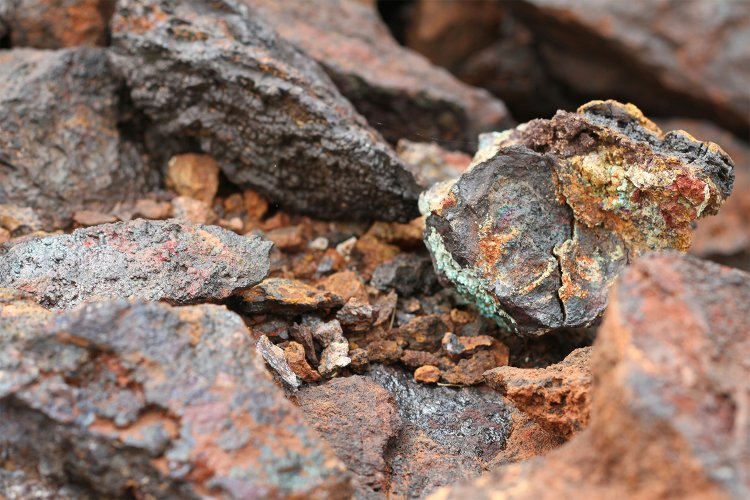As I participate in the Future Mineral Forum (January 2023) being held for the second time in Riyadh, Saudi Arabia, I ponder the process of how new countries enter the global market and find their place. How do they connect to the global market and what challenges must they overcome? Additionally, I question the timing of when and how opportunities open and close in this industry.
I was listening to the speech of Saudi Arabia’s Deputy Minister of Mining Khalid Al-Mudaifer, who invited investors to the mining sector of his country. It was strange for a country that thrives on oil revenues to make such a move, which sparked my interest to study it. At that time, Saudi Arabia was just starting to move into the mining industry, and the reason behind this shift was to counter the risk that the world would shift to a green economy by 2050, resulting in no consumers for its oil, and a potential cut-off of its income.
I learned about the Saudi Vision 2030 document, which defines around 100 strategic goals aimed at creating and diversifying economic sectors, such as human development, based on the mining and energy sectors. Saudi Arabia is based on Islamic religious values, and it aims to achieve its goals through Vision Realization programs. It seems that Saudi Arabia’s approach to developing its mining sector could serve as an inspiring model for gaining the necessary political and public support, as well as sustaining policies in the long term. I learned about the Future Mineral Forum, which began in late 2021 after the Covid restrictions were slightly eased, and saw it as an opportunity to witness the process firsthand.
FIRST FORUM (2022)
About 7,000 people gathered for the first Future Mineral Forum, which was initially planned to take place on the UB-Seoul-Dubai-Riyadh route but was relocated due to the widespread of the Omicron variant in Turkey. The forum was held just after the Covid curfew was lifted. As someone interested in the development of new industries, I learned to view this forum from the perspective of a country that is trying to establish a thriving mining industry and paid close attention to the discussion topics.
• Exploration is the foundation of the mining industry, and without the existence of geological potential, the mining sector cannot be established. This is perhaps why Robert Friedland was invited to occupy the most distinguished guest seat at the Future Mineral Forum. During the meeting, he gave presentations and participated in panel discussions on various topics, including the Nubian Shield, a geological formation spanning North Africa, the Arabian Peninsula, and central Europe, advanced geophysical technologies used in its research, and the future demand for metals. Furthermore, Robert Friedland has transitioned from being the face of the junior exploration business to becoming an influencer who drives mineral exploration and research on a regional and national scale.
• Given Saudi Arabia’s ambition to establish a new mining industry within a short period, there is a need to attract knowledge, experience, and technology from around the world. In line with this objective, they have passed the “Mining Investment Law” and have created a favorable regulatory environment for mining and exploration companies to operate. Some of the regulations include the ability to set up a company within a few days, the financing of 75% of all future investments without requiring ownership in the case of exploration, and the opening of a deposit. In an interview with Mark Bristow, director of Barrick Gold, who is collaborating with Saudi Arabia’s state-owned mining company Ma’aden, the general vision of the mining industry that Saudi Arabia wants to create became clear. In general, the Saudi government is welcoming companies that can meet the modern requirements of the mining industry. It was interesting to note that many issues related to the creation of a new mining industry are not confined to Saudi Arabia alone but are being discussed regionally, with Saudi Arabia taking a leading role, and other parties also participating with high hopes.
• The possibility of Saudi Arabia becoming a hub for mineral resources in the region is gaining momentum. This idea supports the Saudi Vision 2030 goal of establishing a logistics center that connects Africa, Europe, and Asia. Saudi Arabia’s ambition to create an industrial cluster based on mining is not limited to its borders, as it also aims to support exploration investments in African and Central Asian countries that make up the Nubian Shield. Discussions at the forum touched on issues such as financing infrastructure for extracting minerals from future projects in the region, clarifying the investment environment, and even establishing an OPEC-style organization. This ambitious vision has solidified the Saudi government’s support for the mining sector and has turned its plans to develop products based on cheap energy into a tool for enhancing relations with neighboring countries. Major institutions in the region, such as the Islamic Development Bank, with its 57 member countries, are ready to invest in this direction.
SECOND FORUM (2023)
The interior design of Riyadh airport has undergone significant improvements, signaling a broader effort to boost tourism in the region. The recent forum drew an impressive 11,000 attendees, including industry titans like BHP’s Mike Henry and Rio Tinto’s Dominic Barton, as well as Ma’aden’s CEO Robert Wilt, who played a prominent role on stage.
This year’s discussions covered a wide range of global mining topics, marking a departure from the previous forum’s more regional focus.
First of all, it is noteworthy that they aimed to put the conversations discussed during last year’s forum into practice. Saudi Arabia has started a comprehensive survey to determine the geological potential of its entire territory, drawing on the experience of Canada and Australia. This endeavor, which costs over USD 700 million, is expected to be completed in 2025. As a result of this survey, metal deposits will likely be identified, and Robert Friedland’s Ivanhoe Electric and Ma’aden have announced the establishment of a joint venture that will conduct geophysical surveys using Ivanhoe’s technology.
Saudi Arabia’s Public Investment Fund, which currently manages about USD 500 billion in assets and plans to increase its assets to USD 1 trillion by 2025, and Ma’aden is establishing a joint company. The new company will have the mandate to enter mining projects in the region.
• During the two-day meeting, much of the discussion focused on the geopolitics of critical minerals. Sheila Khama, former director of De Beers Botswana, explained that geopolitics can be broken down into political and economic influence and that the development of certain industries and technologies requires careful consideration of critical minerals from these perspectives. The countries that are strategically located, have untapped mineral resources, and can properly evaluate and act on their potential, have the opportunity to attract significant funding in the mining sector and develop their infrastructure and human resources based on it. Hirofumi Katase, a former vice minister for international affairs at Japan’s Ministry of Economy, Trade and Industry, who currently sits on the board of a technology company, noted that the United States sees China as a strategic competitor and aims to create a critical mineral supply chain independent of China. This has prompted Saudi Arabia to focus regionally and reminded other countries of the importance of defining their public-private and international partnership mechanisms properly.
• Former Korean Minister of Trade, Industry, and Energy Hyung Hwan Joo said something that sounded rather new to my ears. In the era of globalization, some companies have adopted a business model of purchasing raw materials from the global market, producing products, and selling them back to the global market. If you look at the Korean industry, it largely operates under this model as a global manufacturing country. In this sense, Korea is a major end-user of critical minerals. However, the geopolitical situation has become “heated” in recent times, particularly due to the intensifying competition between the United States and China, leading to supply chain challenges for critical minerals and rare earth elements in Korea’s strategic industries such as battery production, electric vehicles, renewable energy, and defense. These challenges now pose a survival question for the industries.
In reality, we are now caught between critical mineral exporting countries that pursue increasingly protectionist policies and consumer countries that aim to source their raw materials from like-minded nations and perform domestic production.
• The rise of resource nationalism and countries using their critical minerals as a geopolitical advantage, as well as policies supporting domestic production such as the Inflation Reduction Act in the United States and the “friend-shoring” policy, pose significant challenges for the Korean industrial sector. The “friend-shoring” policy aims to source battery raw materials domestically and from countries with free trade agreements. Currently, more than 60% of the main raw materials for batteries are dependent on China, including 80% of lithium hydroxide, 80% of cobalt hydroxide, and 60% of nickel sulfide. As a result, ensuring a stable supply of key raw materials has become the number one priority for the Korean government to ensure its industrial security. Therefore, the government is not solely relying on battery manufacturing companies and the ministry responsible for the issue. Instead, the government has created a private sector partnership called the Battery Alliance, which involves battery companies, original spare parts companies, car manufacturers, battery upstream and anode-cathode manufacturers, overseas mineral miners, export promotion agencies, and relevant government ministries. The alliance maps the entire supply chain, trade, and logistics of critical minerals creates an early warning system in case of problems and establishes the conditions for joint investment in overseas mining projects by participating companies and refineries at all stages of battery production. Additionally, Korean refineries are creating conditions for processing raw materials from countries such as Australia and Canada, which have free trade agreements with the United States, and other countries with neutral status.
The Korean government has also allocated USD 3 billion through its export promotion agencies as part of a long-term low-cost financing program. It provides generous tax incentives, as well as environmental and legal support, to domestic refineries. The government intends to cooperate with developing countries that have natural resources at the economic and industrial levels and provide diplomatic support. These measures aim to increase Korea’s sources of raw materials, process them domestically and increase the strategic reserves of critical elements such as cobalt, nickel, and lithium by increasing public investment, providing tariff concessions, and offering financial support. The transition to a green economy is accompanied by a great opportunity in the field of critical minerals, which is rare in human life, at this conference. At the same time, the younger generation is especially interested in being a part of something good. Participants express the idea that if we can understand and act correctly, the mining industry can be positioned at a very different level.
It is generally accepted that countries must pay attention to the need for transparency upstream and downstream if they want to consider where they will be located in the circular economy ecosystem and develop the mining industry. Investment in the mining industry is often accompanied by technological progress. One of the advantages of mining is that it is geographically tied to the location of resources. Mongolian youth aspire to lead a prosperous life in their country, and in the future, they may ask why we did not take the necessary steps during this transitional period. Therefore, we must act now. It is time for the critical minerals industry to make a move, just as the trade industry did in the early 1990s.
Mining Insight Magazine, febuary 2023




